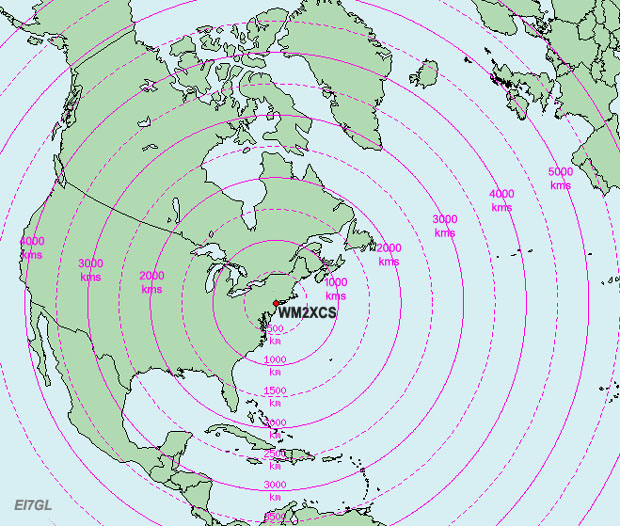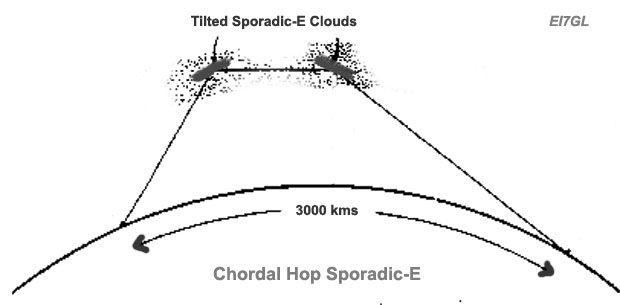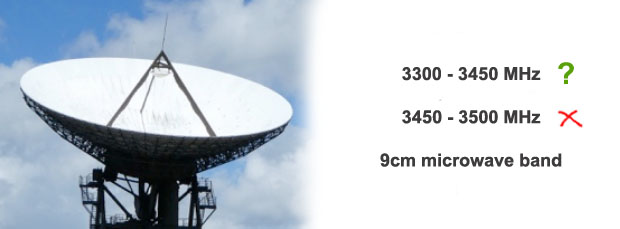In 2021, seven US stations and one Canadian station were given experimental licenses for the 40 MHz band. Several are now active and using the WSPR beacon mode on the band.
This post covers the reception reports for each station in North America for January 2022.
Canadian experimental station CBG209: To allow the callsign to be recognised by WSPR, the callsign was reversed and 902BGC was used.
The openings for the month of January are shown above and I have listed the openings below with the reports under 200kms filtered out. I also removed multiple reports for the same station for the same opening. The power is listed as 10 watts.
2022-01-15 17:32 902BGC CN89 WM2XCC DM13ji 40.663524 10 -22 0 1856
2022-01-12 05:14 902BGC CN89 W3PM EM64or 40.663509 10 -27 0 3365
2022-01-12 04:54 902BGC CN89 WB6HYD CM87xi 40.663524 10 -27 0 1351
2022-01-12 04:54 902BGC CN89 W7IV CM95qn 40.663525 10 -23 0 1560
2022-01-12 00:14 902BGC CN89 WM2XCC DM13ji 40.663522 10 -29 1 1856
2022-01-04 15:40 902BGC CN89 WM2XCC DM13ji 40.663522 10 -13 0 1856
2022-01-03 18:00 902BGC CN89 WM2XCC DM13ji 40.663521 10 -26 1 1856
2022-01-03 17:50 902BGC CN89 WB6HYD CM87xi 40.663524 10 -20 0 1351
2022-01-03 17:40 902BGC CN89 WB6HYD CM87xi 40.663524 10 -21 0 1351
2022-01-02 09:18 902BGC CN89 WM2XCC DM13ji 40.663523 10 -17 0 1856
2022-02-01 22:16 WM2XCW CN88 VE7NZ CN89 40.663552 10 12 0 111
2022-01-13 17:50 WM2XCW CN88 VE7SKY CN89 40.663467 10 10 0 111
2022-01-13 01:30 WM2XCW CN88 VE7RPX CN89lh 40.663531 10 -19 0 93
2022-01-12 21:00 WM2XCW CN88 VE7DH CN89nf 40.663544 10 -4 0 84
2022-01-12 20:50 WM2XCW CN88 KC7GVU CN88kb 40.663531 10 -29 0 47
2022-01-12 20:44 WM2XCW CN88 CGB209 CN89li 40.663529 10 -16 0 97
WM2XAN in Michigan: This one is listed as 100 watts.
2022-01-17 16:30 WM2XAN EN74oh W4WLO/S11 EM50vo 40.663449 100 -26 -4 1553
2022-01-16 01:54 WM2XAN EN74oh W4WLO/S11 EM50vo 40.663445 100 -24 -4 1553
2022-01-15 23:44 WM2XAN EN74oh AE5LY/2 EL29hb 40.663491 100 -27 -4 1937
2022-01-12 04:02 WM2XAN EN74oh W3PM EM64or 40.663469 20 -10 -4 1079
2022-01-11 16:24 WM2XAN EN74oh WM2XEJ EM83ji 40.663485 100 -7 -3 1226
2022-01-11 06:20 WM2XAN EN74oh WM2XEJ EM83ji 40.663487 100 -22 -4 1226
2022-01-11 02:56 WM2XAN EN74 VE1PYE FN84et 40.66347 100 -18 0 1690
2022-01-10 22:14 WM2XAN EN74 N2OTO EL96wi 40.663894 0.5 -18 -4 2063
Local (y-m-d) TX txGrid RX rxGrid MHz W SNR drift km mode km/W spotQ version
2022-01-23 21:30 WM2XEJ EM83ji W4WLO/S11 EM50vo 40.663487 100 -19 0 562
2022-01-20 18:34 WM2XEJ EM83ji WM2XAN EN74oh 40.663527 100 -18 0 1226
2022-01-19 15:10 WM2XEJ EM83ji WM2XAN EN74oh 40.663524 100 -28 0 1226
2022-01-16 00:26 WM2XEJ EM83ji WM2XAN EN74oh 40.663525 100 -19 -1 1226
2022-01-15 23:52 WM2XEJ EM83ji AE5LY/2 EL29hb 40.663522 100 -18 0 1251
2022-01-15 22:56 WM2XEJ EM83ji W4WLO/S11 EM50vo 40.663477 100 -17 0 562
2022-01-12 17:28 WM2XEJ EM83ji N2OTO EL96wi 40.663522 100 -22 0 833
2022-01-12 14:52 WM2XEJ EM83ji NI4Y EM73 40.663509 100 -28 0 171
2022-01-11 21:02 WM2XEJ EM83ji VE2UG FN35gs 40.66345 10 -25 0 1611
2022-01-11 18:20 WM2XEJ EM83ji N2OTO EL96wi 40.663456 10 -22 0 833
2022-01-11 16:08 WM2XEJ EM83ji WM2XAN EN74oh 40.663464 10 -22 -2 1226
2022-01-11 15:04 WM2XEJ EM83ji KC5LT EM86 40.663454 100 -21 1 348
2022-01-11 06:22 WM2XEJ EM83ji WM2XAN EN74oh 40.663466 10 -6 -2 1226
2022-01-11 06:04 WM2XEJ EM83 N2OTO EL96wi 40.663453 10 4 0 841
Local (y-m-d) TX txGrid RX rxGrid MHz W SNR drift km
2022-01-11 23:16 WM2XCC DM13ji VE7DH CN89nf 40.663503 2 -25 0 1826
2022-01-11 22:38 WM2XCC DM13ji CGB209 CN89li 40.663489 2 -6 0 1843
2022-01-11 21:46 WM2XCC DM13ji VE7DH CN89nf 40.663503 2 -24 0 1826
2022-01-11 20:16 WM2XCC DM13ji VE7UTS CN89li 40.66349 2 0 0 1843
2022-01-04 15:30 WM2XCC DM13ji VA7MM/A CN89og 40.663537 2 -23 0 1829
2022-01-02 09:38 WM2XCC DM13ji VA7MM/A CN89og 40.663535 2 -22 0 1829














































